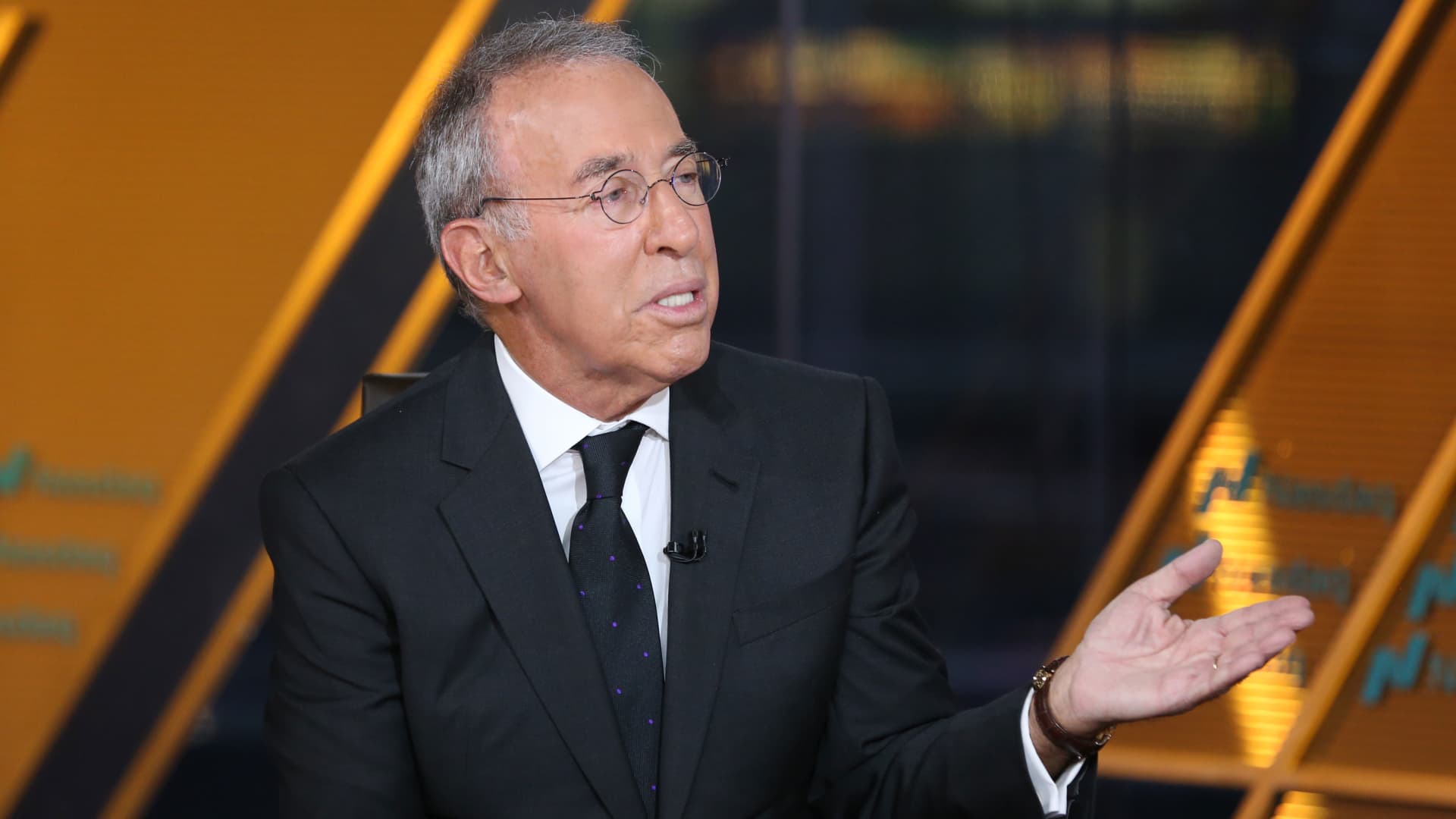Dow rallies, S&P 500 is flat as investors rotate out of tech to start new quarter: Live updates

Traders work at the New York Stock Exchange on June 25, 2025.
NYSE
The Dow Jones Industrial Average climbed on Tuesday as investors rotated out of technology stocks to kick off the second half of 2025.
Investors were also weighing the latest developments with President Donald Trump’s giant tax and spending bill as well as comments from Federal Reserve Chair Jerome Powell.
The S&P 500 traded near the flatline, while the Nasdaq Composite lost 0.5%. The blue-chip Dow was the outlier, gaining 426 points, or 1%.
Traders dropped tech giants, such as Nvidia and Microsoft, and opted to scoop up shares of health-care companies instead. Amgen, Merck and UnitedHealth jumped roughly 3%, while Johnson & Johnson rose nearly 2%, lifting the 30-stock Dow. It’s a turnaround from the market’s tech-driven recovery in the second quarter: The Technology Select Sector SPDR Fund (XLK) jumped nearly 23% in that period, but was off almost 1% to start the third quarter.
The 30-stock Dow Industrials over the past day
“For the last two months of the quarter, it was really risk on. It was about buying stocks that had these really strong secular growth drivers like AI and technology,” said Anthony Saglimbene, Ameriprise chief market strategist. “I think we’ve exhausted that trade.”
Elsewhere, electric vehicle maker Tesla fell more than 4% after President Donald Trump suggested in a post on Truth Social that the Department of Government Efficiency (DOGE) should look into the government subsidies that CEO Elon Musk’s companies have received.
Musk has criticized Trump’s megabill, calling it “utterly insane and destructive” over the weekend. In response to the president’s recent post, Musk wrote in a post on X: “I am literally saying CUT IT ALL. Now.” This isn’t the first time Trump and Musk have sparred over the administration’s spending plans. A feud broke out between the two earlier this year.
The megabill passed in the Senate Tuesday in a 51-50 vote. The package now moves on to the House, which can still reject changes to the legislation.
Earlier in the day, Powell confirmed at a European Central Bank panel in Portugal that the Fed likely would have cut rates again by now were it not for tariffs. He added that any future move would depend on the data and didn’t answer directly regarding whether or not July would be too soon.
“In effect, we went on hold when we saw the size of the tariffs and essentially all inflation forecasts for the United States went up materially as a consequence of the tariffs,” Powell said.
Traders are hoping for deals between the U.S. and its trading partners, as Trump’s 90-day reprieve on his steepest tariffs is set to expire next week. While Zachary Hill, head of portfolio management at Horizon Investments, doesn’t believe the market expects “very much,” volatility could still be on the horizon.
“If you did see some reimposition of the reciprocal tariff rates that were announced on ‘liberation day,’ I don’t think that would be well received by investors in the near term. Is it a catastrophe or something that’s going to cause a reaction of similar magnitude of what we saw in early April? No, I don’t think so, but we are pretty fully valued here,” he said. “Investors have definitely increased positioning over the last couple of weeks, so I do think that’s a potential vulnerability.”
Stocks made an impressive comeback after suffering steep declines in April, after Trump’s sweeping tariff policy pushed the S&P 500 near bear market territory. The major averages have since made a sharp recovery, with the broad market index closing the second quarter with a 10.6% gain and the Nasdaq up nearly 18% in the period.










